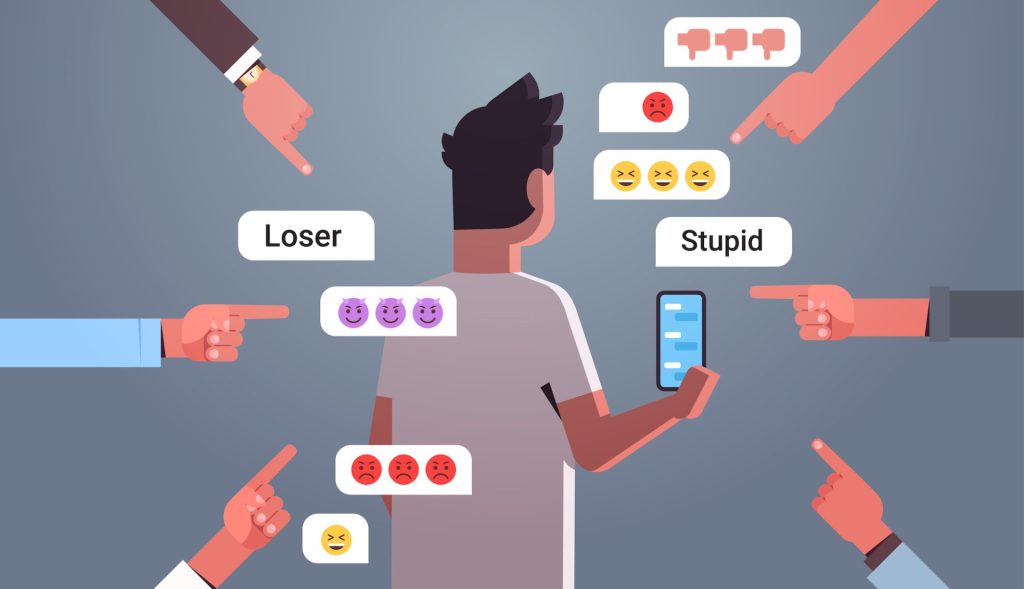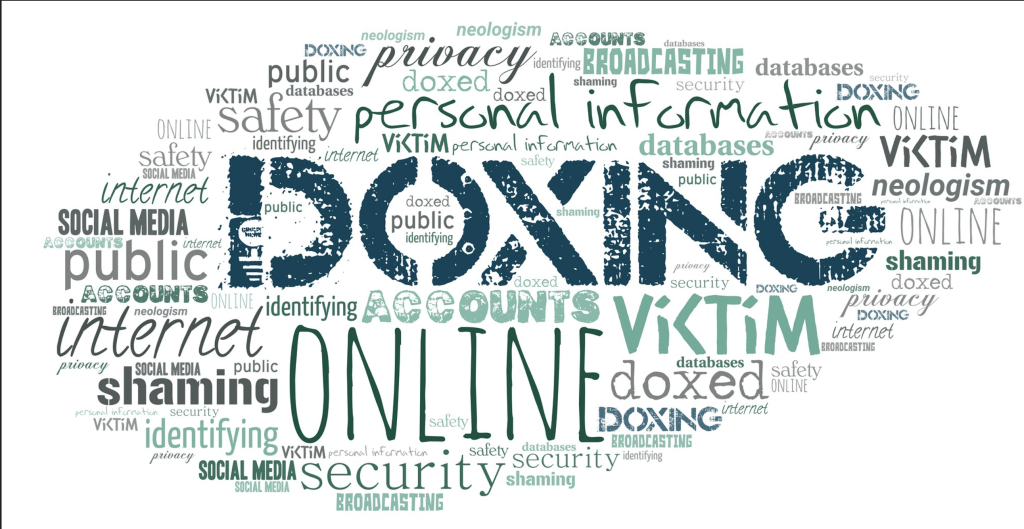
File:Cyber-bullying.jpg by Iyadwaleed is licensed under CC BY-SA 4.0
The world of social media is a double-edged sword, offering opportunities for connection, communication, and challenges that can have profound consequences. This article analyses cyberbullying, which has garnered increasing attention in recent years. To set the stage for our exploration, we introduce the tragic incident involving Hana Kimura, whose untimely death tragically highlights the devastating consequences of cyberbullying, verbal abuse, and online harassment as the primary factors leading to her suicide.
The Kimura Incident: A Tragic Consequence of Cyberbullying
Hana Kimura, a young and talented professional wrestler, became the center of a media storm due to the relentless cyberbullying she faced on social media platforms. The incessant barrage of hurtful comments, derogatory messages, and online harassment took a heavy toll on her mental and emotional well-being. Regrettably, this ordeal ultimately led to her decision to take her own life, with cyberbullying, verbal abuse, and online harassment identified as the main driving factors behind this tragic outcome.
Kimura’s death is a stark reminder of the severity and impact of cyberbullying in today’s digital age. It underscores the urgent need to address these issues, not just as isolated incidents but as pervasive and systemic problems that affect countless individuals worldwide. As we delve further into this complex issue, we will examine the definition of cyberbullying, its growing prevalence, and the specific case of Twitter as a platform where cyberbullying often rears its ugly head. Through this exploration, we hope to raise awareness, foster understanding, and explore potential solutions to combat this troubling phenomenon.
The Rise of Cyberbullying
Cyberbullying has become a prevalent issue with far-reaching consequences in today’s interconnected world. It transcends age groups, affecting children, teenagers, and adults alike. While traditional forms of bullying, such as in schools, continue to exist, the emergence of the Internet has provided a new platform for bullying – cyberbullying. This digital form of bullying occurs across various online platforms, including email, blogs, social networking websites like Facebook and Twitter, online gaming, and instant messaging. Cyberbullying is often described as electronic aggression, online harassment, or digital bullying. Several definitions of cyberbullying exist, many of which are variations of traditional bullying definitions. A commonly accepted definition of cyberbullying is “an aggressive, intentional act carried out by a group or individual, using electronic communication, repeatedly targeting a victim who cannot easily defend themselves, and occurring over a period” (Moreno, 2014).
The prevalence of cyberbullying among adolescents varies, with estimates ranging from 10% to 40%, depending on age groups and the specific criteria used to define cyberbullying (Moreno, 2014). While cyberbullying shares similarities with traditional bullying, there are key differences:
- Anonymity: Victims of cyberbullying often remain unaware of the identities and motivations of their bullies.
- 24/7 Accessibility: Cyberbullying incidents can reach victims anytime, given the ubiquity of smartphones and computers.
- Amplification: Bullying content can be quickly disseminated to a broad audience via the Internet, making it particularly embarrassing and enduring.
The Escalating Severity of the Problem
Research has consistently highlighted the detrimental impacts of cyberbullying on both perpetrators and victims. Victims report lower academic achievements and other educational problems due to their experiences. Both bullies and victims frequently report higher levels of depression and lower self-esteem (Moreno, 2014). One of the gravest consequences of bullying, including cyberbullying, is the heightened risk of suicide. Recent research published in “JAMA Pediatrics” has revealed that victims of cyberbullying are more likely to contemplate suicide or make suicide attempts (Moreno, 2014).

twitter, socialmedia, application, like, tablet, young, full, using, body, business, businessman, person, digital, computer, holding, work, handsome, length, happy, technology, tech, background, smart, standing, studio, guy, internet, shirt by Mohamed Hassan is licensed under CC0 1.0
Twitter Platform and Cyberbullying
Following the program’s broadcast, numerous viewers flooded Kimura Hana’s social media accounts. While some criticized her performance on the show, others resorted to personal attacks targeting her appearance and character. This episode on Twitter is emblematic of the disturbing trend in cyberbullying, where individuals face not only criticism but also vicious personal attacks, undermining the platform’s potential for constructive dialogue.
This section sheds light on Twitter’s content moderation policies. It explores how the Kimura Hana incident unfolded on the platform, highlighting the troubling behavior exhibited by some audience members.

Doxing by EpicTop10.com is licensed under CC BY 2.0
Doxing, short for “dropping documents,” is a malicious online practice where individuals or groups publicly disclose someone’s private and often sensitive information on the Internet. This information may include real names, addresses, phone numbers, family members, workplace details, etc. The doxing can have severe and far-reaching consequences, including threats, harassment, stalking, malicious activities, and even physical harm to the victim.
Doxing can be categorized into three main types:
- Deanonymizing Doxing: In this type, attackers attempt to unveil the true identity of an individual who uses a pseudonym or remains anonymous online. This can be done to hold someone accountable for their online actions.
- Targeting Doxing: Targeting doxing involves revealing a person’s location or other information, making them susceptible to physical attacks or harassment.
- Delegitimizing Doxing: This form aims to damage a person’s reputation, character, or standing by exposing information that could be embarrassing or harmful, leading to public humiliation.
The ethical implications of doxing are complex, and it requires a delicate balance between privacy rights and the potential public interest. While there may be instances where revealing information is justified, it should always be approached cautiously, ensuring a legitimate public interest exists (Douglas, 2016).
Harassment and verbal abuse
Harassment and verbal abuse have been omnipresent on the Internet for years. However, with the increasing ubiquity of social media platforms like Twitter, these behaviors have gained a louder and more pervasive platform. Trolls, anonymous users, or acquaintances often exploit the platform’s immediacy to send derogatory comments, engage in character assassinations, or launch coordinated attacks against a particular user.
The case of Hana Kimura is a heartbreaking reminder of how these relentless online assaults can push individuals to the brink. She was subjected to a barrage of hate, with many attacking her character, questioning her abilities, and disparaging her profoundly personally. Such is the severity of online harassment and verbal abuse; it goes beyond mere comments and can severely affect a person’s mental well-being, self-worth, and perception of their place in society.

Respect by Nick Youngso is licensed under CC BY-SA 3.0
Addressing and Preventing
The explosive growth of social media platforms brings forth a heightened responsibility, not just for users but more critically for the platforms themselves. As most online interactions are now centralized onto a few major platforms, the onus of content moderation and community management intensifies (Tarleton Gillespie, 2018). Initially, the Internet was envisioned as an open space free from intermediaries. Nevertheless, with the rise of social media, these platforms have become the new intermediaries, offering a more centralized and user-friendly experience.
However, the challenge lies in balancing promoting freedom of expression and preventing harm. Platforms grapple with content moderation, navigating ethical dilemmas and legal and economic implications (Tarleton Gillespie, 2018). The rapid growth of these platforms further complicates matters. Ensuring a comprehensive content review becomes intricate with diverse user requirements and expectations.
The power that few dominant social media platforms hold in shaping public discourse and behaviors cannot be understated. As they aim to bridge the gap between ideals and reality, the primary motivation remains profitability, usually achieved via advertising and user data collection. Therefore, it is paramount that these platforms conscientiously govern the internet space, making concerted efforts to not just moderate but educate and engage with users. This delicate balance between open interaction and ensuring the safety and quality of online communities will significantly influence the future trajectory of these platforms (Tarleton Gillespie, 2018).
Conclusion
The tragic case of Hana Kimura underscores the profound and damaging effects of cyberbullying, a menace that has insidiously permeated platforms like Twitter. From defining cyberbullying to exposing its escalating severity, it becomes clear that unchecked negative online behaviors, such as doxing and harassment, have catastrophic implications. Nevertheless, hope lies in proactive measures, improved solutions, heightened education, and active community participation. It is an urgent call for all platforms, users, and society to recognize and actively combat this digital-age threat. Together, the collective might of society can redefine the narrative and create a safer online world for all.
Reference List
All Platforms Moderate. (2018). In Gillespie, Custodians of the Internet : Platforms, Content Moderation, and the Hidden Decisions That Shape Social Media (pp. 1–23). Yale University Press,. https://doi.org/10.12987/9780300235029
Douglas, D. M. (2016). Doxing: a conceptual analysis. Ethics and Information Technology, 18(3), 199–210. https://doi.org/10.1007/s10676-016-9406-0
Hana Kimura: Netflix star and Japanese wrestler dies at 22. (2020). BBC. [online] 23 May. Available at: https://www.bbc.com/news/world-asia-52782235.
Moreno, M. A. (2014). Cyberbullying. JAMA Pediatrics, 168(5), 500–500. https://doi.org/10.1001/jamapediatrics.2013.3343
This work is licensed under a Creative Commons Attribution-NonCommercial-NoDerivatives 4.0 International License.

Rex Yau


